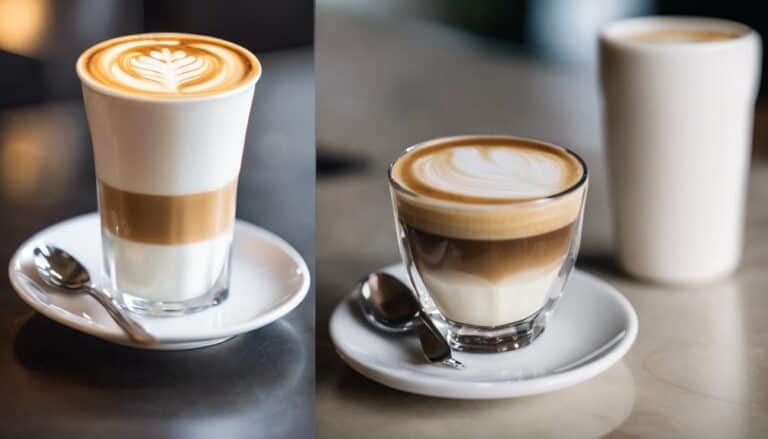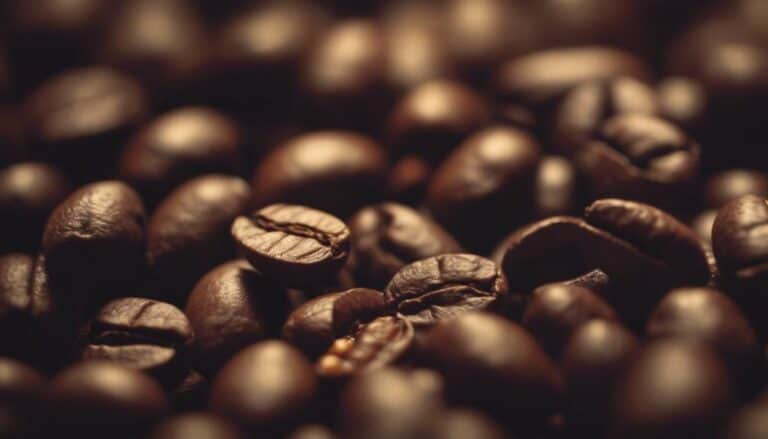7 Contrasts Between Latte and Cappuccino
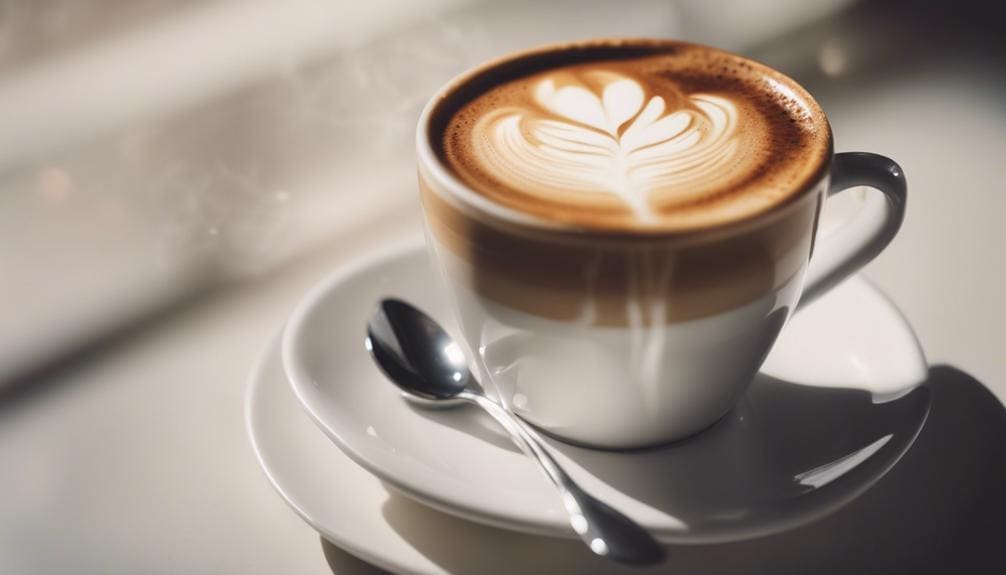
As a coffee enthusiast, I've often pondered the subtle yet significant differences between a latte and a cappuccino. The contrasting milk-to-espresso ratios and foam thickness between these two classic beverages offer a glimpse into the intricate world of coffee craftsmanship. But beyond these initial distinctions lies a domain of complexity that influences everything from flavor profiles to serving sizes. Exploring these seven unique differentiators promises to reveal a deeper understanding of the artistry behind these beloved coffee creations.
Milk-to-Espresso Ratio
When crafting a cappuccino or latte, the milk-to-espresso ratio plays an essential role in shaping the distinct flavor profiles of these popular espresso-based beverages.
In a cappuccino, the traditional equal parts ratio of espresso, steamed milk, and milk foam creates a harmonious balance. This balanced ratio allows the bold espresso flavor to shine through while providing a velvety texture from the steamed milk and a light, airy foam layer on top.
On the other hand, a latte features a higher ratio of steamed milk to espresso, resulting in a creamier texture and a milkier taste. The emphasis in a latte is more on the creamy mouthfeel and subtle coffee undertones rather than a strong coffee presence.
Understanding and manipulating the milk-to-espresso ratio is essential for baristas and coffee enthusiasts alike to achieve the desired flavor and texture in their cappuccinos and lattes.
Foam Thickness
In understanding the distinctions between a cappuccino and a latte, the foam thickness serves as a defining feature that significantly influences the overall experience of these espresso-based beverages.
Cappuccinos are known for their thick foam layer, which is dense and airy, enhancing the drink's texture and visual appeal. This velvety and plentiful foam creates a noticeable separation between the espresso and milk elements, providing a unique taste profile.
On the contrary, lattes feature a lighter foam layer that contributes to a smoother mouthfeel. The thin foam in lattes is designed to complement the creamy texture of the steamed milk, allowing the flavors of the espresso and milk to harmonize without one overpowering the other.
The difference in foam thickness between cappuccinos and lattes plays a significant role in shaping their distinct taste profiles, making each sip a delightful exploration of contrasting textures and flavors.
Flavor Intensity
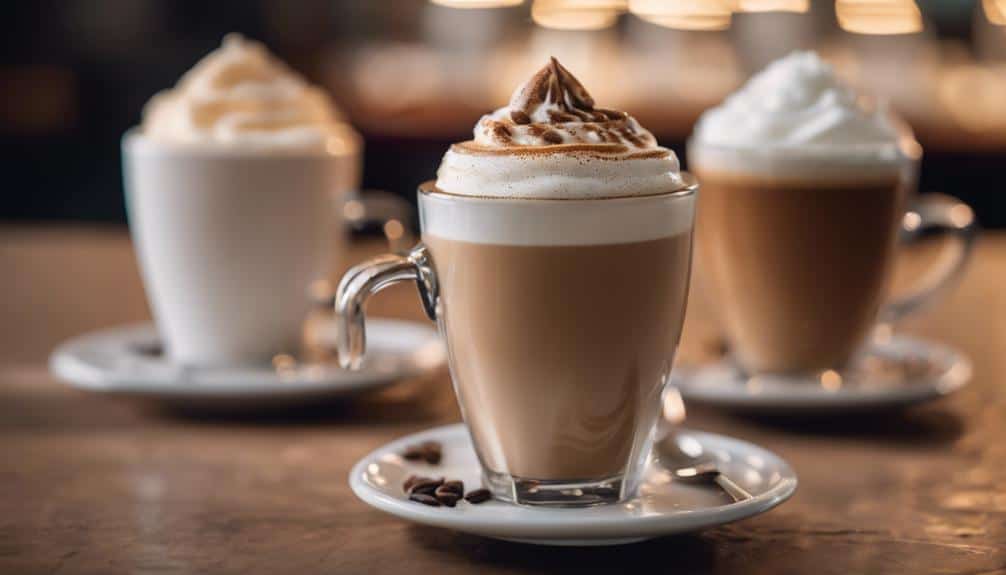
When comparing the flavor intensity of lattes and cappuccinos, I notice distinct differences in the strength of taste and richness levels.
Cappuccinos present a robust espresso flavor that's balanced by the frothed milk, creating a bold coffee profile.
In contrast, lattes offer a milder coffee taste with a focus on the creamy texture of steamed milk, resulting in a smoother and more subtle flavor experience.
Strength of Taste
With a higher concentration of espresso compared to lattes, cappuccinos boast a stronger coffee flavor that appeals to those seeking a bold and robust taste experience. The intensity of the coffee flavor in a cappuccino is a result of the balanced ratio of espresso to steamed milk, creating a rich and full-bodied taste. This intensity caters to individuals who enjoy a more pronounced coffee presence in their drink.
On the other hand, lattes offer a milder flavor profile due to the higher proportion of steamed milk, resulting in a creamier and smoother taste. The contrast in flavor between these two popular coffee drinks allows for a diverse range of preferences to be met, satisfying both those who prefer a strong coffee kick and those who enjoy a gentler, milkier experience.
Richness Levels
Moving from the Strength of Taste to Richness Levels, the contrast in flavor intensity between cappuccinos and lattes becomes even more pronounced, catering to varying preferences for coffee experiences. Cappuccinos offer a bold and robust coffee experience with a strong espresso flavor, heightened by the thick and airy foam on top. On the other hand, lattes provide a creamier and smoother texture, with a milder coffee taste due to the higher proportion of steamed milk. Below is a comparison table highlighting the differences in richness levels between cappuccinos and lattes:
| Aspect | Cappuccino | Latte |
|---|---|---|
| Espresso | Strong, bold | Mild, subdued |
| Steamed Milk | Balanced ratio | Higher proportion |
| Foam | Thick and airy | Creamy |
| Richness | Intense and robust | Creamy and smooth |
Textural Differences
In comparing the textural variances between lattes and cappuccinos, one can distinctly notice the contrasting foam characteristics and milk-to-espresso ratios that shape each drink's overall mouthfeel. Cappuccinos boast a thick, fluffy foam layer on top, creating a luxurious and bold drinking experience. The foam in cappuccinos is dry and airy, contributing to a velvety texture that enhances the espresso's intensity.
On the other hand, lattes offer a creamier and smoother texture due to a lighter foam layer and a higher proportion of steamed milk. This results in a milder coffee experience that appeals to those seeking a gentler flavor profile. The textural differences between these two beverages are intricately linked to the variations in milk-to-espresso ratios and foam characteristics.
Whether you prefer the boldness of a cappuccino's dry foam or the creaminess of a latte, these textural distinctions play a vital role in defining your coffee-drinking experience.
Serving Size

Serving size distinctively differentiates between a cappuccino and a latte, showcasing the preferences for coffee intensity and milkiness among coffee drinkers. A cappuccino, usually served in smaller cups ranging from 150-180 ml, provides a more concentrated coffee flavor with a balanced ratio of espresso to steamed milk. This smaller serving emphasizes the robust coffee taste and the luxurious velvety foam layer that crowns the drink, appealing to those who savor a shot of espresso.
On the contrary, a latte is served in larger cups, typically around 240 ml, offering a more generous amount of the beverage. The larger size allows for a higher proportion of steamed milk, resulting in a creamier texture and a milder coffee flavor. Lattes cater to individuals looking for a smoother, milk-forward coffee experience with a less pronounced espresso kick.
The difference in serving sizes between cappuccinos and lattes captures the diverse preferences in coffee intensity and milkiness within the world of specialty coffee drinks.
Origin and History
The origins of latte and cappuccino tell a fascinating tale of coffee's journey across continents.
While the latte found its beginnings in America, the cappuccino has deep roots in Italian coffee culture.
Understanding the evolution of these recipes sheds light on the rich history behind these beloved coffee beverages.
Origins of Coffee
Originally emerging in America, the caffe latte quickly gained popularity as a beloved coffee beverage with roots tracing back to Berkeley, California. The term 'caffe latte' was first coined by William Dean Howells in 1867, marking an early reference to this now globally cherished drink. The first patented espresso machine by Luigi Bezzera in 1901 revolutionized coffee preparation, enabling the creation of espresso-based drinks like lattes and cappuccinos. Cappuccinos, with Italian origins, were introduced in Italy as 'cappuccini' before becoming a staple in American coffee culture in the 1980s. The history of lattes and cappuccinos showcases the evolution of coffee culture, shifting from traditional Italian espresso beverages to contemporary customizable drinks enjoyed worldwide.
| Espresso | Milk | Cappuccino |
|---|---|---|
| Strong coffee | Creamy texture | Italian origin |
| Intense flavor | Frothy milk | Equal parts espresso, milk, foam |
| Base for lattes | Steamed milk | Popular in American coffee culture |
Evolution of Recipes
During the early stages of coffee's journey through history, significant transformations occurred in the recipes of both lattes and cappuccinos, shaping the distinct flavors and textures we enjoy today.
The traditional cappuccino, originating in Italy as 'cappuccini,' contains equal parts of strong espresso, steamed milk, and milk foam, creating a bold and rich coffee flavor.
On the other hand, lattes are made with a milder espresso base and a higher proportion of steamed milk, resulting in a creamier and smoother taste profile.
The evolution of espresso drinks can be traced back to the 20th century, with inventions like the milk frother and the patented espresso machine by Luigi Bezzera in 1901 playing pivotal roles in the development of these beloved coffee types.
Popular Variations
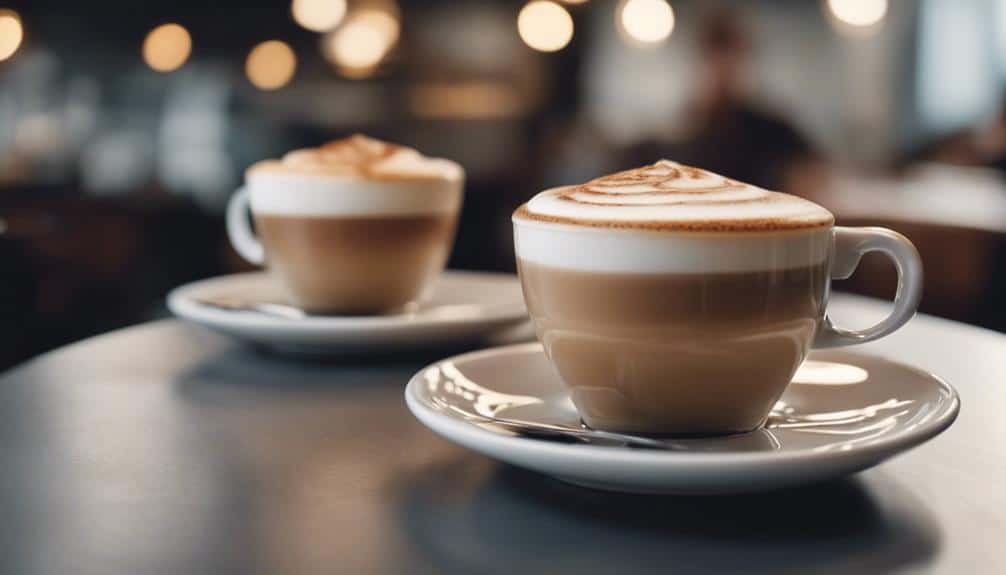
When exploring popular variations of lattes, one cannot overlook the creative use of flavored syrups to elevate the taste experience. By infusing classic coffee and steamed milk mix with syrups like vanilla, hazelnut, and caramel, lattes transform into indulgent treats. Additionally, alternative lattes offer exciting flavor profiles using ingredients such as matcha, mocha, pumpkin spice, and chai. These variations cater to diverse preferences, from the earthy tones of matcha to the rich sweetness of mocha and the warm spices of chai. Chai lattes, in particular, provide a less caffeinated option by using black tea and aromatic spices. The table below showcases some popular variations of lattes and the unique flavors they offer:
| Latte Variation | Flavor Profile | Key Ingredients |
|---|---|---|
| Matcha Latte | Earthy and vibrant | Matcha powder, milk |
| Mocha Latte | Rich and chocolatey | Espresso, chocolate syrup, milk |
| Pumpkin Spice Latte | Warm and spiced | Pumpkin spice syrup, espresso, milk |
| Chai Latte | Aromatic and soothing | Black tea, spices, milk |
| Hazelnut Latte | Nutty and sweet | Hazelnut syrup, espresso, milk |
Conclusion
To sum up, the differences between latte and cappuccino extend beyond just the milk-to-espresso ratio. From foam thickness to flavor intensity, each beverage offers a unique experience for coffee lovers.
Whether you prefer a smooth and creamy latte or a bold and robust cappuccino, there's a perfect option for every taste preference. Explore the world of coffee and discover which drink suits your palate best.


